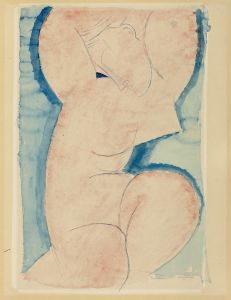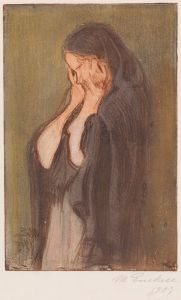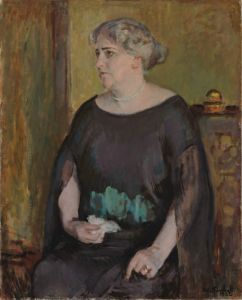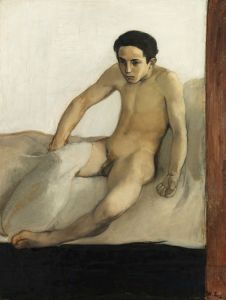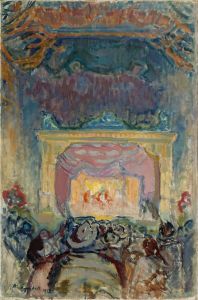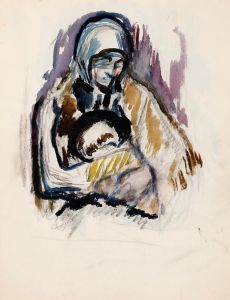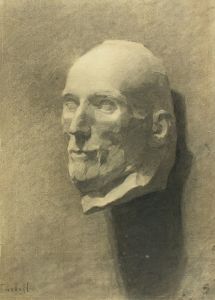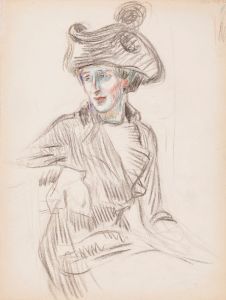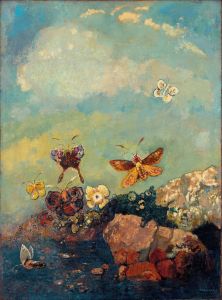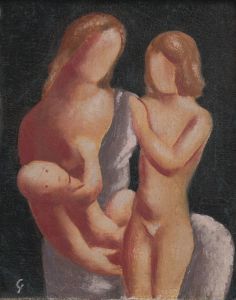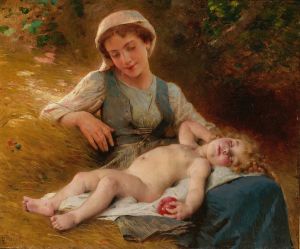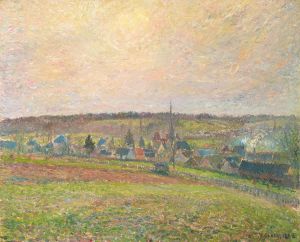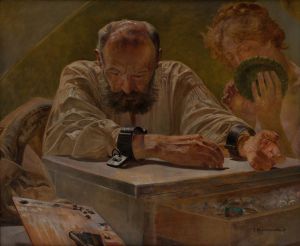
Luonnos
A hand-painted replica of Magnus Enckell’s masterpiece Luonnos, meticulously crafted by professional artists to capture the true essence of the original. Each piece is created with museum-quality canvas and rare mineral pigments, carefully painted by experienced artists with delicate brushstrokes and rich, layered colors to perfectly recreate the texture of the original artwork. Unlike machine-printed reproductions, this hand-painted version brings the painting to life, infused with the artist’s emotions and skill in every stroke. Whether for personal collection or home decoration, it instantly elevates the artistic atmosphere of any space.
Magnus Enckell was a prominent Finnish symbolist painter, known for his significant contributions to Finnish art in the late 19th and early 20th centuries. One of his notable works is "Luonnos," which translates to "Sketch" in English. This piece exemplifies Enckell's unique artistic style and his exploration of symbolism and human form.
Magnus Enckell was born on November 9, 1870, in Hamina, Finland. He studied at the Drawing School of the Finnish Art Society in Helsinki from 1889 to 1891 and later continued his studies in Paris. Enckell was influenced by the Symbolist movement, which sought to express the metaphysical and the mystical through art. This influence is evident in many of his works, including "Luonnos."
"Luonnos" is a testament to Enckell's skill in capturing the human form and his interest in the interplay of light and shadow. While specific details about the creation date and the current location of "Luonnos" are not widely documented, the piece is often discussed in the context of Enckell's broader body of work, which frequently features themes of introspection and the exploration of human emotion.
Enckell's style evolved throughout his career, moving from a darker, more muted palette to brighter, more vibrant colors. This evolution is reflective of his personal artistic journey and the broader changes in the art world during his lifetime. "Luonnos," like many of his works, likely showcases his early use of a more subdued color scheme, focusing on the subtleties of form and composition.
The Symbolist movement, which greatly influenced Enckell, was characterized by its emphasis on representing ideas and emotions rather than direct representations of the natural world. This movement was a reaction against the realism and naturalism that dominated the art scene in the late 19th century. Enckell, along with other Symbolists, sought to delve deeper into the human psyche, exploring themes of spirituality, dreams, and the unconscious.
Enckell's work, including "Luonnos," often features solitary figures, which can be interpreted as a reflection of his interest in individualism and personal introspection. His figures are typically depicted in contemplative poses, inviting viewers to ponder the inner lives of the subjects.
Throughout his career, Enckell was a central figure in the Finnish art scene. He was a member of the Septem group, which was instrumental in introducing modernist ideas to Finnish art. His influence extended beyond his paintings, as he also played a significant role in art education and the promotion of new artistic movements in Finland.
Magnus Enckell passed away on November 27, 1925, in Stockholm, Sweden, but his legacy continues to be celebrated in Finland and beyond. His works, including "Luonnos," remain important examples of Finnish Symbolism and are studied for their innovative approach to form and emotion.
While specific details about "Luonnos" may be limited, the painting is an integral part of understanding Enckell's contribution to art and his exploration of the human condition through Symbolism. His ability to convey complex emotions and ideas through his art continues to resonate with audiences today.





